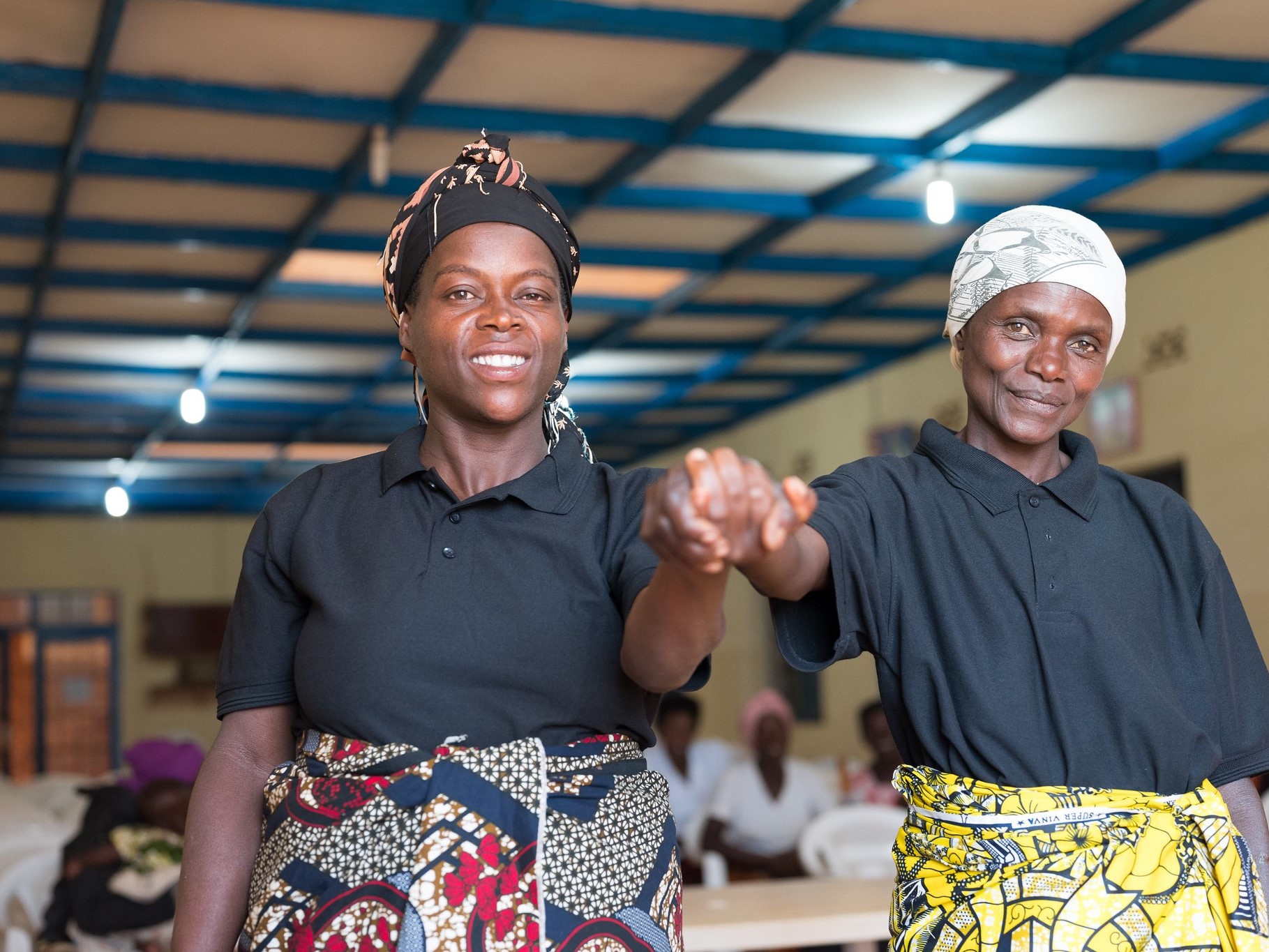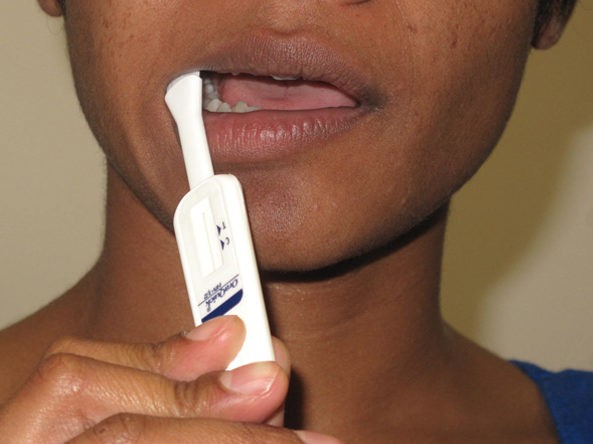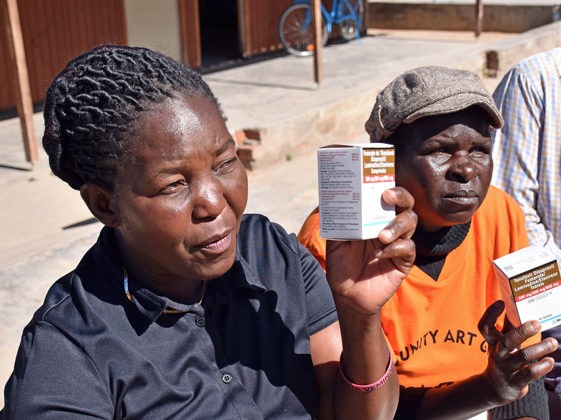Article and Study Summary:
Adaptive Strategies for Retention in Care among Persons Living with HIV
Published in:
NEJM Evid 2023;2(4)
https://evidence.nejm.org/doi/full/10.1056/EVIDoa2200076
Authors:
Geng EH, Odeny TA, Montoya LM, et al.
Summary
This trial used a two-stage randomization design to compare the effect of ART retention interventions that were modified in response to newly diagnosed HIV-positive participants’ retention behavior during the first two years of ART care. In the first stage enrolled participants were randomized to one of three retention support arms: standard of care (SOC) patient education and counseling; weekly short messaging service (SMS) texts encouraging engagement with the clinic; or conditional cash transfers (CCT) for on-time clinic visits. The second randomization was tailored to participant attendance at clinic visits in the first year. Participants who missed a visit by more than 14 days were immediately randomized to one of three return-to-care strategies: clinic staff outreach by phone or in person; SMS + CCT; or peer navigator support. SMS and CCT participants who attended all visits in the first year were randomized to continue or discontinue their original retention support intervention for an additional year. Outcomes included retention in care without missed visits, time in care over two years, and viral suppression at two years. Participants randomly assigned to CCT with peer navigation following a missed visit and those with no retention lapse randomized to continue CCT in their second year of ART experienced the highest proportion of time engaged in care (90.4%) and the highest probability of treatment success.
Discussion Questions:
1) Would an adaptive approach to supporting retention among clients initiating treatment in your program be feasible?
2) What are the considerations for offering some form of conditional cash transfer to support retention in care in your settings? Do you have any experience to share?
Please share your thoughts and experiences with us in the comments section below.
Full Synopsis:
PDF version available in English.
Study Summary
This study assessed consecutive behavioral interventions to support retention over participants’ first two years in HIV care, using a sequential multiple assignment randomized trial (SMART) design to tailor interventions to individual participant retention.
Study Setting
Five facilities in Nyanza region, Kenya.
Methods
- People living with HIV who had initiated antiretroviral therapy (ART) at study facilities within 90 days were eligible if they were ≥ 18 years of age, had no plans to relocate outside the province, had cell phone and short message service (SMS) access, and were willing to be contacted if they missed a clinic appointment.
- People who were hospitalized or enrolled in another trial were excluded.
- At enrollment, participants underwent stage 1 randomization to one of three retention support arms: standard of care (SOC); weekly SMS text messages; or conditional cash transfers (CCT) for on-time clinic visits. Stage 2 randomization was tailored to participant attendance at clinic visits in the first year. Participants who missed a scheduled visit by > 14 days underwent an immediate second randomization to one of three return-to-care strategies: clinic staff outreach by phone or in person; SMS + CCT; or peer navigator support. SMS and CCT participants who attended all visits in the first year underwent a second randomization to continue or discontinue their original retention support intervention for an additional year.
- Participants were followed for two years or until death.
- Stage 1 randomization interventions included the following:
- SOC: Group education at each visit, group or individual counseling at ART initiation and additional counseling as needed.
- SMS: Weekly text messages greeting and encouraging participants, with text content tailored to participant preference. Participants had the option to return texts.
- CCT: Participants received 400 Kenyan shillings (approximately 3 USD) each time they attended clinic within three business days of a scheduled appointment. The amount reflected the median cost of transport and opportunity costs associated with a clinic visit.
- Stage 2 randomization interventions, tailored to participant response to initial retention support included the following:
- Support for participants who missed a clinic visit by > 14 days:
- Outreach attempted by phone and in-person contact, using standard clinic practices.
- Combined SMS + CCT, with each component delivered as in stage 1.
- Peer navigation from trained peers with contextual knowledge of local communities and the health system, and for many, lived experience with HIV. Peer navigators received a three-day training to use a client-centered approach to relationship-building and collaboration, adapted from principles of motivational interviewing. Navigators were embedded in the existing lay health worker cadres and the intervention was intentionally “light touch” to be scalable if effective.
- Support for participants completing one year of ART care with no missed visits:
- SOC participants continued SOC for an additional year.
- SMS and CCT participants were randomly assigned to continue or discontinue SMS and CCT interventions.
- Support for participants who missed a clinic visit by > 14 days:
- Primary outcomes were: retention in care over one year without a missed visit during stage 1; return to clinic among those who missed a visit during stage 2; and for those with no lapse in year one while receiving SMS or CCT, retention in care for one year following stage 2 randomization to either continue or discontinue the assigned retention intervention.
- To compare all strategies for retention support adapted to retention behavior during the first year, the primary outcome was proportion of time spent actively engaged in care, defined as proportion of days during two years of follow-up that a participant was alive and had not missed a scheduled appointment.
- Secondary outcomes included a composite of viral suppression and retention at the end of year one. At the end of year two, treatment success was defined as viral load < 1,000 copies/milliliter (ml), with participants missing viral load measures classified as either having treatment failure or missing, using a standardized multidisciplinary adjudication process blinded to treatment group.
- Analyses were adjusted for baseline characteristics at stage 1 randomization (sex, age, World Health Organization [WHO] stage, CD4 count, alcohol use, pregnancy, and site) and for certain time-varying characteristics at stage 2 randomization.
- Outcome analysis was conducted for stage 1 and stage 2 separately. The outcome of interventions to support return to care during year one were also evaluated by stage 1 support intervention assignment. Effects, estimated with targeted maximum likelihood, were reported on an absolute scale as average treatment effects (ATE).
- Primary end points for stage 1 and 2 were assessed among all participants in each combination of stage 1 and 2 interventions.
Study Population and Follow-Up
- Between March 2015 and October 2017, 1,809 individuals were enrolled and underwent stage 1 randomization. The allocation included 605 participants in SOC; 548 in SMS; and 656 in CCT.
- At enrollment participants had a median age of 31.5 years; 34.4% were male. Among women 10.3% were pregnant at ART initiation.
- Median CD4 T cell level at ART initiation was 362.5 (25th percentile to 75th percentile 321.2); WHO stage at ART initiation was stage 1: 60.4%; stage 2: 29.4%; stages 3 and 4: 10.2%.
- Follow-up was completed on November 26, 2019; outcome data collection, including adjudication for care status and treatment failure, continued until November 30, 2020.
- The primary end point for combined stage 1 and 2 was assessed among 1,808 of 1,809 participants (99.9%).
Results
- Initial retention support. In stage 1, 79.7% of participants randomized to CCT were retained in care for one year compared with 70.7% in SOC (ATE of CCT vs. SOC: 9.9%; 95% confidence interval (CI): 5.4%, 14.4%) and 71.7% in SMS (ATE of CCT vs. SMS: 5.7%; 95% CI: 1.3%, 10.1%). Comparing SMS vs SOC, ATE was 4.2% (95% CI: -0.7%, 9.2%).
- Compared with SOC, composite retention and treatment success at one year was higher in the CCT arm (ATE CCT vs SOC: 10.6%; 95% CI: 5.6%, 15.5%) and SMS (ATE SMS vs SOC: 5.7%; 95% CI: 0.3%, 11.1%).
- Effects of reengagement interventions. In stage 2 analyses of re-engagement among those with missed visits during year one (n=312), 69.1% of participants assigned to peer navigation returned to care within a year, compared with 55.7% assigned to outreach (ATE navigation vs. outreach: 14.1%; 95% CI: 0.6%, 27.6%); 69.5% of participants returned to care in the SMS + CCT group (ATE SMS + CCT vs. outreach: 11.4%; 95% CI: -2.2%, 24.9%).
- Both treatment success (ATE: 21.6%; 95% CI: 7.7%, 35.5%) and proportion of follow-up time engaged in care (ATE: 16.4%; 95% CI: 4.9%, 27.8%) were higher among those assigned to peer navigation compared with those assigned to outreach.
- Treatment success (ATE: 6.8%; 95% CI: -7.9%, 21.4%) and proportion of time in care (ATE: 9.6%; 95% CI: -1.7%, 20.9%) among persons assigned to SMS + CCT were more similar to those among persons assigned to outreach.
- Effects of intervention discontinuation. For participants with no lapse in care during year one while receiving SMS or CCT, the study assessed retention in care for an additional year following stage 2 randomization to either continue or discontinue the assigned retention intervention.
- Those randomly assigned to continue CCT for an additional year had increased retention in care (83.5%) compared with those randomly assigned to discontinue CCT (60.3%; ATE: 28.6%; 95% CI: 19.9%, 37.3%). Treatment success at study close (ATE: 9.4%; 95% CI: 3.5%, 15.4%) and time engaged in care (ATE: 7.4%; 95% CI: 4.1%, 10.6%) were also higher among those who continued CCT.
- In contrast, among participants with no retention lapse on SMS during year one and who were successfully randomly assigned again, retention in care for an additional year was not clearly different between persons randomly assigned again to continue SMS (67.8%) vs those assigned to discontinue (72.2%) (ATE: -4.4%; 95% CI: -16.6%, 7.9%), nor was treatment success or time engaged in care.
- Effects of sequenced strategies adapted to stage 1 retention. Analyses of outcomes in stage 1 and 2 estimated the mean proportion of time spent engaged in care among 1,809 participants with the primary outcome measured and probability of treatment success among 1,692 out of 1,809 participants with measured treatment success outcomes after two years of follow-up. Compared to participants receiving SOC with no retention lapse and SOC + outreach following a lapse in retention:
- Participants receiving SMS with added peer navigation; CCT with added peer navigation; CCT with intensification to CCT + SMS following a missed visit; and all with initial interventions continued if no lapse occurred, had increased time in care, with effect sizes ranging from 5.5% to 7.2%, and treatment success (with effect sizes ranging from 6.5% to 8.2%) compared to SOC.
- The strategy of initial CCT with peer navigation following a missed visit and continuation of CCT if no lapse occurred resulted in the highest proportion of total time in care (90.4% of follow-up days; 95% CI: 87.3%, 93.5%; ATE vs. SOC: 7.2%; 95% CI: 3.7%, 10.7%) and the highest probability of treatment success (83.0% success; 95% CI: 79.0%, 87.0%; ATE vs. SOC: 8.2%; 95% CI: 2.2%, 14.2%).
- Patients assigned to SMS with added CCT following missed visits and continued if no visits were missed, had increased time in care compared with SOC (ATE: 4.4%; 95% CI: 0.6%, 8.2%) but did not have an increase in treatment success (ATE: 2.9%; 95% CI: -3.6%, 9.5%). The strategy of discontinuing CCT after one year did not improve time in care (ATE: 2.2%; 95% CI: -1.4%, 5.9%) or treatment success (ATE: -2.0%, 95% CI: -8.2%, 4.2%) at study completion, compared with SOC.
Critical Analysis
This sequential multiple assignment randomized trial found that while both CCT and SMS improved retention among adults living with HIV in the first year of ART, over 25% of participants still missed visits, underscoring the importance of additional support. Among participants who experienced a lapse in retention, only peer navigation meaningfully improved treatment success—defined as viral suppression—and effects were consistent across the initial prevention interventions. Overall, active prevention of retention lapse with either CCT or SMS, with added peer navigation for those with missed visits, and the continuation of initial prevention intervention among those with no lapse, yielded the best outcomes of the strategies studied in this trial.
The following points should be considered when interpreting the study findings:
- The study was conducted before the widespread use of integrase inhibitor-based ART regimens in Kenya, and the reported treatment success outcomes may not reflect the experience of current patients initiating ART.
- Study eligibility criteria excluded participants with plans to relocate, those without access to a cell phone and SMS messaging, and those under 18 years of age. Study findings may not be generalizable to all sub-populations living with HIV, including some at higher risk for retention challenges such as highly mobile populations, individuals with limited means, and youth.
- The study used a limited number of interventions and did not include peer navigation as an initial retention support strategy in stage 1. As peer navigation is widely used to support early retention in ART, this is an important limitation.
- CCT in this study was designed to offset the costs of attending clinic visits and was relatively modest, but this intervention is more resource intensive than SMS or SOC. Cost-effectiveness analyses are important to assess the sustainability of CCT in real-world settings.
- The randomized design of the study precluded inclusion of participant preferences and flexibility to choose retention support interventions that best fit their individual needs.
Implications
Retention support is a recognized essential component of ART care, especially for individuals newly diagnosed with HIV. The offer of distinct support interventions tailored to the evolving needs of ART clients may have greater impact than a uniform approach to retention.
This article synopsis was written by Dr. Julie Franks. Share your thoughts on this article or suggest an article for Journal Club by emailing her at jf642@columbia.edu
Other articles of note:
Outcomes of a model for re-testing HIV-negative index contacts in Sedibeng, South Africa.









